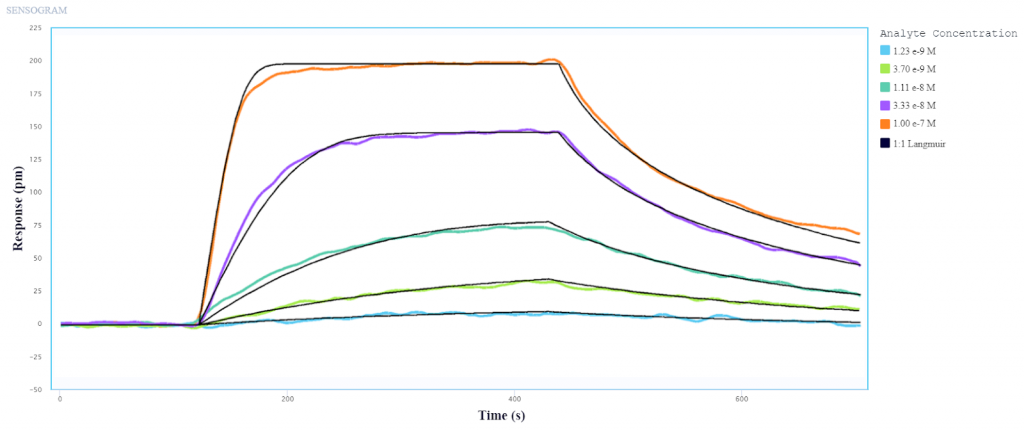
Overview
Label-free analysis of biomolecular interactions is a critical tool for the development of biologics. Conventional label free analytical instruments require relatively large amounts of sample thereby making it challenging to use in the early stages of biologics discovery and development. Many of the conventional systems require highly trained personnel to produce high quality data. Further, systems that employ conventional fluidics based on tubing, pumps and valves, are prone to higher risk of reliability issues. This, at the same time, limits sample type utility due to issues such as clogging, thereby rendering them to have limited utility with crude samples.
Nicoya’s Alto addresses these challenges through the use of digital microfluidics and integrated LSPR sensors to perform label-free analysis in sub-microliter droplets. This application note demonstrates the use of Alto for measuring biomolecular interactions and compares it to a conventional SPR platform. The results show excellent agreement of the kinetics and affinity between Alto and the conventional SPR platform, while using only 1% of the sample and needing under 30 minutes of hands-on time. All of these make Alto an extremely efficient and user-friendly platform for biologics discovery and development.
